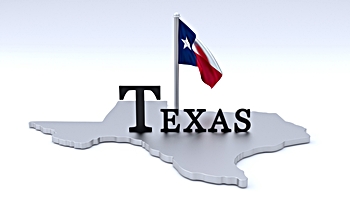It’s Texas’ turn to take the next step on school choice

By Erik Telford
Gov. Rick Perry will be the first to tell you that Texas leads the nation in common-sense policy, even taking out TV advertisements in states with struggling economies to extol Texas’ business-friendly climate and culture of liberty and personal responsibility.
STEP UP, TEXAS: Parents in other states have the power to use their own tax money to send their children to whichever schools meet their needs in learning styles, but in Texas, the government has banned such programs.
Yet in one critical area of government, Texas lags far behind many of its peers.
Parents in other states have the power to use their own tax money to send their children to whichever schools meet their needs in learning styles, but in Texas, the government has banned such programs.
As one of the nation’s fastest-growing states, Texas has had to respond rapidly to a surge in its school-age population. Generally, the state has approached education with a forward-thinking mentality, offering charter schools, virtual schools and limited interdistrict enrollment.
The next step forward is to expand the state’s school choice program by lifting the scholarship ban and allowing families to direct their tax dollars to the school that will best suit their child’s needs.
Texas families have access to a limited school choice program, with parents allowed to enroll their children in public schools outside their district whose enrollment is below capacity. Through this program, parents have been able to “shop” for public elementary, middle and high schools much in the way young adults can shop for colleges. Whether a family is looking for a particular sports, art or music program, a more diverse student body, or smaller class sizes, the school choice law gives them options they did not previously have.
The state deserves credit for allowing parents to enroll children in schools outside their district instead of settling for the one assigned to them by the fiat of Austin. However, by restricting school choice to public schools alone, Texas is putting low-income parents at a significant disadvantage.
An opportunity scholarship program ― similar to the successful ones that have been implemented in Ohio, Indiana, and Louisiana, among other states ― would give all parents, regardless of their income or ZIP code, true power over their children’s future.
Parents fund education through their tax dollars, and opportunity scholarships would allow them to direct those tax dollars to whichever school will do the best job of unlocking their child’s potential.
For many families, this will be the assigned public school, a neighboring public school, or a charter school ― all of which are options under Texas’ current school choice law. Yet for some students, a private, religious, virtual, or other specialized or nontraditional school best fits the bill. For parents with means, faith-based, nonpublic schools are already options, but opportunity scholarships would level the playing field by ensuring that all families have access to the full slate of educational options available.
Unfortunately, the Texas House of Representatives voted last year to uphold a ban on these sorts of opportunity scholarships, mistakenly construing them as a transfer of public money to private entities.
Texans ought to know better than this. The “public money” that comprises opportunity scholarships is tax money that belongs to parents, and parents should have the right to use this tax money already earmarked for education to educate their child however they please.
When the Legislature returns to session next spring, lawmakers should shed this backward-thinking mentality and embrace policies that give every child a chance to succeed.
Erik Telford is Senior Vice President of the Franklin Center for Government and Public Integrity. National School Choice Week is Jan. 26-Feb. 1.
The post It’s Texas’ turn to take the next step on school choice appeared first on Watchdog.org.







